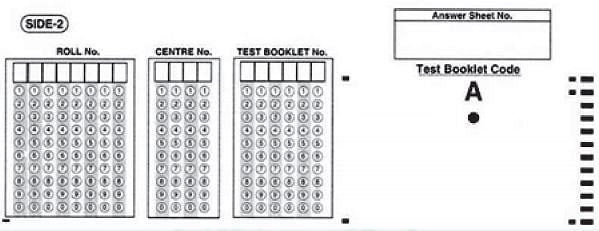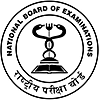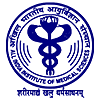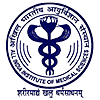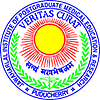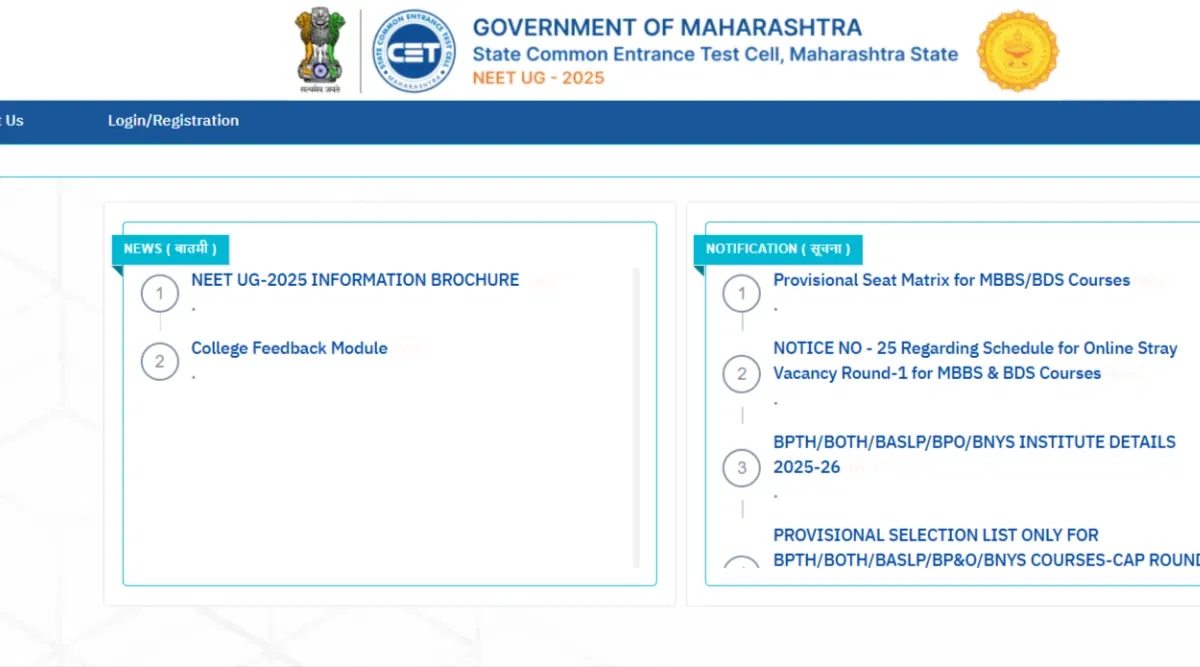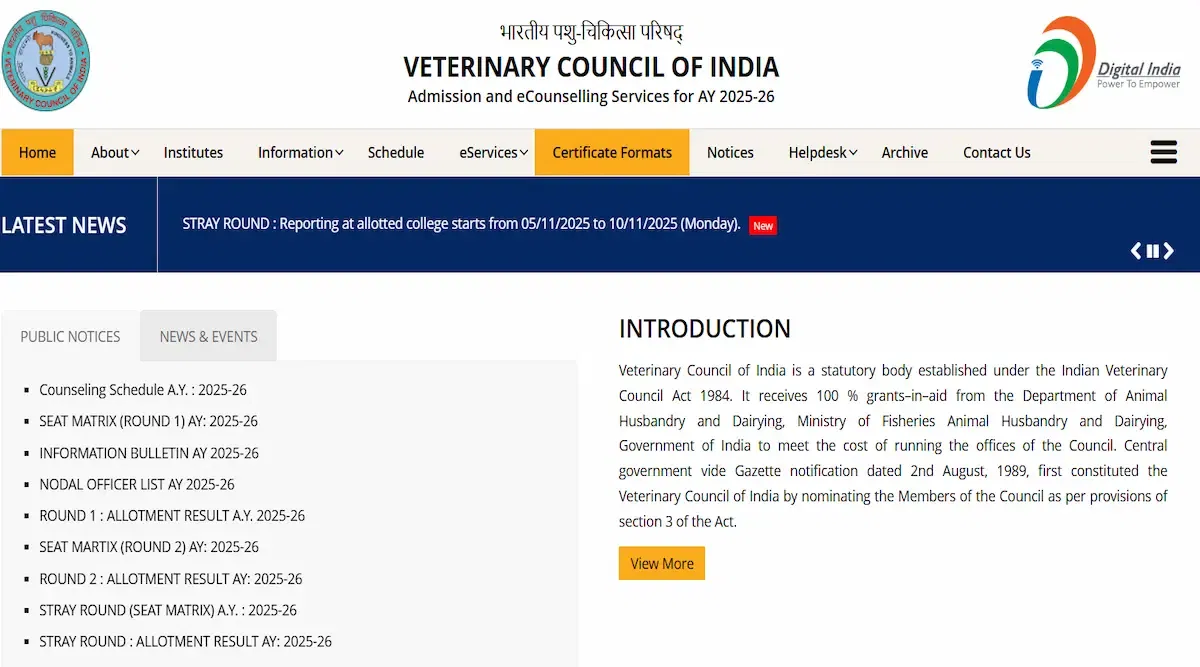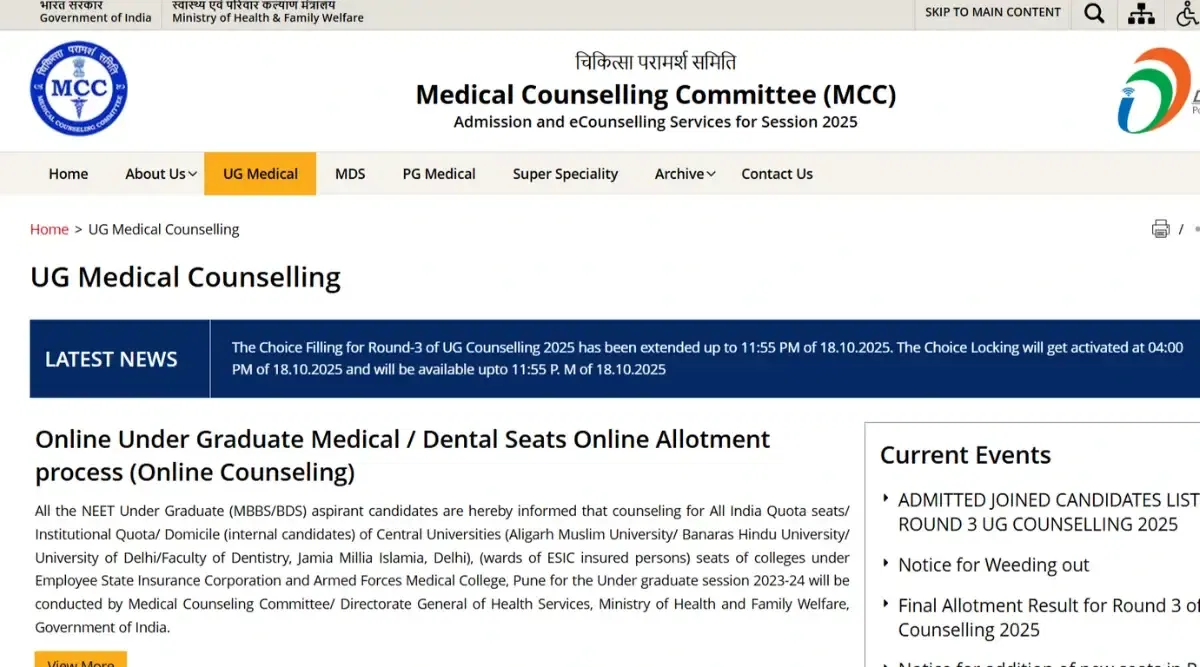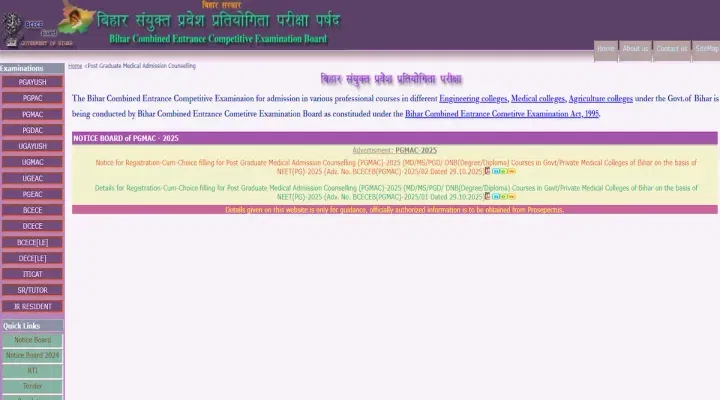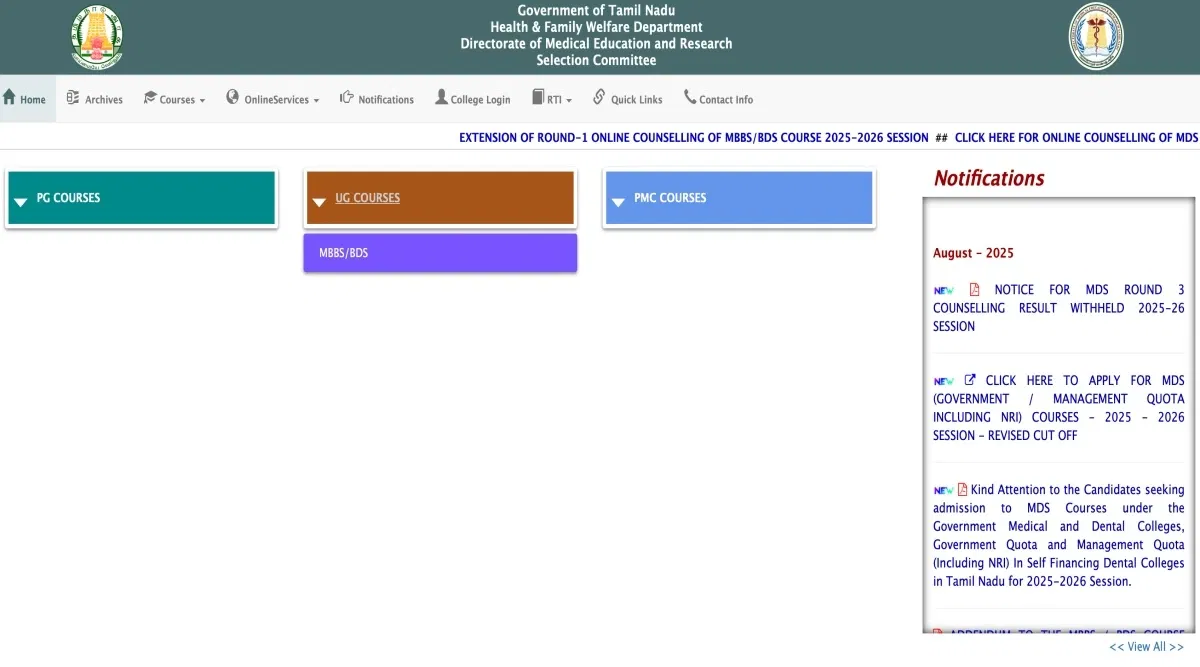
Table of Contents
- NEET 2025 Exam Pattern: Language Options
- NEET 2025 Exam Pattern Highlights
- NEET 2025 Exam Pattern
- NEET 2025 Exam Pattern: Weightage of Topics
- NTA NEET Marking Scheme 2025
- Points to Remember While Marking NEET OMR Sheet 2025
- NEET Question Paper Pattern Analysis (Chapter-Wise and Section-Wise)
- NEET Category-Wise Qualifying Marks
- Important Topics from NEET Syllabus 2025
NTA has announced changes to the NEET 2025 exam pattern, returning to the pre-COVID format. One major change is the removal of optional questions from Section B. Instead of 200 questions, candidates will now answer 180 compulsory questions — 45 each from Physics and Chemistry and 90 from Biology.
The exam duration has also been reduced from 200 minutes to 180 minutes, or three hours. NTA stated that the exam pattern and duration have reverted to the earlier format, with no optional questions or extra time.
NEET 2025 exam will continue to be conducted in a paper-pencil-based (OMR) mode, held in a single day and single shift, dismissing previous speculation about multiple shifts. NTA confirmed that this decision was made as per the National Medical Commission's guidelines.
The detailed exam pattern and structure has been released along with the NEET 2025 notification and information bulletin. NTA has already launched the official website for NEET and posted the updated NEET 2025 Syllabus, which remains unchanged from last year.
Key Changes made by NTA in NEET 2025 Exam Pattern:
- No Optional Questions: The optional Section B has been removed. Candidates must attempt all 180 questions.
- Number of Questions: Reduced to 180 compulsory questions — 45 from Physics, 45 from Chemistry, and 90 from Biology.
- Exam Duration: Shortened from 200 minutes to 180 minutes (3 hours).
- Mode and Shift: The exam will be paper-pencil-based (OMR format). It will be conducted in a single day and single shift, dismissing earlier speculations of multiple shifts.
To pursue MBBS, BDS, or other medical courses through NEET, it's crucial to understand the exam pattern thoroughly. The NEET exam typically includes questions from Physics, Chemistry, and Biology, with 180 multiple-choice questions (MCQs) in total.
Each section contains 45 questions, and the exam is conducted in a pen-and-paper format. Candidates are awarded 4 marks for each correct answer, and 1 mark is deducted for each incorrect answer (negative marking). The NEET exam duration is 3 hours.
NEET 2025 Exam Pattern: Language Options
To ensure equality of opportunity, the candidates have the option to attempt the NEET exam in 11 different languages. The candidates must keep the following points in mind while selecting the medium of NEET 2025 exam in the Application Form.
In addition, NTA released a notice regarding the NEET question paper medium. According to the notice, candidates who opted for English as the question medium would receive an English-only test booklet. In comparison, candidates who opted for regional languages would receive a bilingual test booklet (i.e., English & opted regional language).
The notice also mentioned that the booklet would include English question paper in white, the regional language in yellow, and Urdu paper in green. Candidates can find the notice in the article below.
- Once chosen, no changes can be made to the language in which the candidate has to answer the question paper.
- The candidates who select English will have their question paper in only one language, i.e., English.
- The candidates who have chosen some other language will have a bilingual NEET Question Paper. The questions will be written in English, as well as in the language they have chosen.
The list of languages candidates can answer their NEET question paper in, along with NEET Exam Centres where these languages will be available is given below:
| Language | Availability |
| Hindi | Available at all NEET Exam Centres |
| English | Available at all NEET Exam Centres |
| Urdu | Available at all NEET Exam Centres |
| Marathi | Available at NEET Exam Centres in Maharashtra |
| Gujarati | Available at NEET Exam Centres in Gujarat |
| Bengali | Available at NEET Exam Centres in West Bengal |
| Assamese | Available at NEET Exam Centres in Assam |
| Tamil | Available at NEET Exam Centres in Tamil Nadu |
| Telugu | Available at NEET Exam Centres in Andhra Pradesh and Telangana |
| Kannada | Available at NEET Exam Centres in Karnataka |
| Oriya | Available at NEET Exam Centres in Odisha |
Candidates must note that they can only exercise the option to attempt NEET 2025 in vernacular, if they reside in the corresponding state, as mentioned above. For example, a candidate residing in Rajasthan cannot attempt the NEET exam in Gujarati or Assamese.
AIso Check: NEET 2025: How to Improve in Weak Subjects?
NEET 2025 Exam Pattern Highlights
It is essential for candidates to understand the overview of the NEET exam pattern 2025 to understand the challenges of the exam. Understanding the NEET paper pattern will also help the candidates develop a sound preparation plan to complete the test with the set parameters.
Highlights related to the NEET exam pattern 2025 are tabulated below for the applicants.
| Particulars | Details |
| Mode of exam | NTA will conduct NEET 2025 in offline (pen-paper-based) mode. Candidates will be answering on a specially designed machine-gradable sheet which will be provided at the exam centre. |
| Subjects | Physics, Chemistry, and Biology (Botany & Zoology). |
| Type of Questions | Multiple-Choice Questions |
| Duration of Test | Candidates will be provided 3 hours to attempt NEET 2025 |
| Options/Question | Every question will be provided with four options (out of which 1 will be the correct answer). |
| Language Options | Hindi, English, Tamil, Assamese, Urdu, Bengali, Marathi, Gujarati, Kannada, Oriya, and Telugu. |
Also Read: 70+ NEET 2025 Most Frequently Asked Questions
NEET 2025 Exam Pattern
NEET exam pattern for 2025 is different from the last years. Although the NEET exam time duration has been decreased, other parameters remain the same. Some of the parameters of the NEET exam pattern that have remained constants are as follows.
- NEET exam total marks
- NEET marks distribution
- NEET marking scheme
- NEET negative marking
- NEET full marks
- NEET exam subjects
The details related to these parameters are below.
- Total Marks: NEET 2025 will be conducted for a total of 720 marks.
- Marking Scheme: Each correct answer will fetch the candidates, 4 marks, and each wrong answer will cost them 1 mark. No marks will be deducted for unattempted questions.
- Response Marking: Answers should be chosen from the four options and marked on the OMR sheet using a ballpoint (Black or Blue) pen as it is an MCQ-based exam.
- Sectional Time Limit: The candidates must note that the NEET 2025 exam pattern does not specify the presence of any sectional time limit. The candidates can attempt each question and section at their own convenience and pace.
- Total Time: 3 hours are given to attempt the exam.
- Category of Questions: Multiple choice questions
NEET Physics Exam Pattern
As per the NEET exam pattern, the details about the physics sections are provided below.
| Section | Number of Questions | Number of Questions to be Answer | Marks |
| A | 45 | 45 | 180 |
NEET Chemistry Exam Pattern
As per the NEET exam pattern, the details about the chemistry sections are provided below.
| Section | Number of Questions | Number of Questions to be Answer | Marks |
| A | 45 | 45 | 180 |
NEET Biology Exam Pattern
The NEET subjects included in the biology sections are zoology and botany. As per the NEET exam pattern, the details about the biology sections are provided below.
| Subjects | Section | Number of Questions | Number of Questions to be Answer | Marks |
| Zoology | A | 45 | 45 | 180 |
| Botany |
A | 45 | 45 | 180 |
Also Check: Best Day Wise Revision Strategy for NEET 2025
NEET 2025 Exam Pattern: Weightage of Topics
The NEET 2025 subject weightage for Physics, Chemistry, and Biology are listed below. Before beginning their exam preparation, students must review the weightage of chapters in NEET 2025 to determine which chapters they must cover in order to score well on the test.
NEET 2025 Physics Chapter-Wise Weightage
The table below shows the chapter weightage for the Physics section of the NEET 2025 exam:
| Chapters | Weightage | Chapters | Weightage |
| Physics and Measurement | 2% | The Behaviour of Perfect Gas and Kinetic Theory | 3% |
| Kinematics | 3% | Electro Statistics | 8% |
| Gravitation | 3% | Current Electricity | 8% |
| Laws of Motion | 3% | Optics | 9% |
| Work, Energy and Power | 4% | Magnetic Effects of Current and Magnetism | 5% |
| Experimental Skills | - | Electromagnetic Induction and Alternating Currents | 9% |
| The motion of systems of particles and rigid body | 3% | Electromagnetic Waves | 5% |
| Thermodynamics | 9% | Dual Nature of Matter and Radiation | 6% |
| Properties of Bulk Matter | 3% | Atoms and Nuclei | 3% |
| Oscillations and Wave | 4% | Electronic Devices | 9% |
NEET 2025 Chemistry Chapter-Wise Weightage
The following information is provided for candidates' reference regarding the weightage of each module in the NEET 2025 Chemistry syllabus:
| Chapters | Weightage | Chapters | Weightage |
| Some Basic Concepts in Chemistry | 1% | p- Block Elements, d- and f- Block Elements | 9% |
| Atomic Structure | 2% | Co-Ordination Compounds | 9% |
| Chemical Bonding and Molecular Structure | 5% | Hydrocarbons | 3% |
| Chemical Thermodynamics | 8% | Organic Compounds Containing Halogens | - |
| Solutions | 5% | Organic Compounds Containing Oxygen | - |
| Equilibrium | 6% | Organic Compounds Containing Nitrogen | 2% |
| Redox Reactions and Electrochemistry | 3% | Biomolecules | 3% |
| Chemical Kinetics | 3% | Principles Related to Practical Chemistry. | 2% |
|
Classification of Elements and Periodicity in Properties
|
2% | - |
NEET 2025 Biology Chapter-Wise Weightage
Below is an overview of the NEET Biology chapter-wise weightage 2025 based on the syllabus.
| Biology Syllabus | Weightage | Biology Syllabus | Weightage |
| Diversity of Living World | 14% | Reproduction | 9% |
| Structural Organisation in Plants & Animals | 5% | Genetics and Evolution | 18% |
| Cell: Structure and Function | 9% | Biology and Human Welfare | 9% |
| Human Physiology | 19% | Biotechnology and its Applications | 5% |
| Plant Physiology | 6% | Ecology and Environment | 6% |
Also Read: How To Score 720 In NEET? Preparation Tips, Strategies
NTA NEET Marking Scheme 2025
Candidates must note that the question paper shall comprise four sections: Physics, Chemistry, Zoology and Botany. Each section shall contain 45 objective-type questions.
NEET exam pattern 2025 does not mention the presence of any descriptive-type questions in the paper. The candidates will be given 3 hours to answer all the questions. The candidates must choose only one response out of the four options provided for each question.
| Particulars | Details |
| Total Number of Questions | 180 |
| Marks per Question | 4 |
| Negative Marking for Incorrect Response | -1 |
| Marks for Unanswered Questions | 0 (No deduction, no addition) |
| NEET Total Marks | 720 |
How to Calculate NEET 2025 Score?
As per the NEET paper pattern, each correct answer shall fetch 4 marks, while every incorrectly answered question shall lead to a deduction of 1 mark from the candidate's total score.
NEET exam marks Calculation: (No. of questions answered correctly x 4) - (The total no. of incorrectly answered questions)
A normalization process is also carried out to calculate the NEET percentile of all candidates.
NEET Marks Distribution 2025 (Subject-Wise)
It is already mentioned that the NEET exam pattern shall have questions from Physics, Chemistry, and Biology subjects from Class 11 and 12. The Biology paper shall have 90 questions, which would further be divided into two equal parts, i.e., Zoology and Botany, separately.
In total, there will be 180 questions, as mentioned in the NEET 2025 question paper pattern. Each question carries four marks, and the NEET full marks for which the exam will be conducted are 720 marks. The subject-wise distribution of marks as per NEET exam pattern 2025 is tabulated below in detail.
| Total | 180 | 180 | 720 |
| Subjects | Number of Questions | Number of Questions to be Answer | Total Marks per Section |
|---|---|---|---|
| Physics | 45 | 45 | 180 |
| Chemistry | 45 | 45 | 180 |
| Zoology | 45 | 45 | 180 |
| Botany | 45 | 45 | 180 |
NEET Marking Scheme 2025: Important Points to Remember
The following are important points to remember for NEET marking scheme 2025:
- The answers will be marked on an OMR sheet using a ball-point pen, hence once a question has been answered, there's no option provided to change the answer.
- The candidates must note that it is not mandatory to attempt all the questions. NEET exam pattern 2025 does not specify any negative marking for unanswered questions.
- Marking more than one response for a question shall lead to a deduction of 1 mark from the candidate's total score.
Read More: Most Repeated Questions in NEET Exam
Points to Remember While Marking NEET OMR Sheet 2025
The candidates will be provided with a sealed test booklet 15 minutes before the commencement of the test. The candidates will not be allowed to open the test booklet until they are asked to do so by the invigilator. Five minutes before the commencement of the test, candidates will be instructed to open the seal of the test booklet.
Fill in the required particulars on the test booklet's cover page and NEET OMR Sheet 2025 with a ballpoint pen immediately after receiving the test booklet. They would be provided with a test booklet in the language opted by the students as the exam medium.
If candidates opt for vernacular languages, then candidates will be provided with a bilingual test booklet. The questions would be written in English and the candidate's chosen language.
- The candidates must only mark the answers using a Ballpoint Pen in black or blue ink. The pen will be provided to the candidates at the exam venue.
- Answers darkened with a pencil or improper circle darkening will be treated as invalid responses. If more than one circle is darkened, it shall be treated as the wrong way of marking. No marks will be awarded for such answers; a mark will be deducted from the candidate's total score.

- All the candidates must mention the test booklet code on the NEET 2025 OMR sheet as soon as they receive the instruction to start writing.
- Changing Response on NEET OMR Sheet: they must be very careful before darkening the appropriate circle, as no further changes can be made in the answer once marked. Using an eraser or whitener on the answer sheet is not allowed as the answer sheets are machine gradable, leading to wrong evaluation. It might also be considered a punishable offence.
- No Attempt: If they do not wish to attempt a question, they should not darken the circle meant to mark the response. Candidates are advised to refrain from guesswork, as a mark will be deducted if their answer is incorrect.
- Rough Work: The candidates must not do rough work on the NEET OMR Sheet. If the need arises, they can use the test booklet.
NEET OMR Sheet 2025 Specifications
The OMR Sheet is of a special type scanned on an optical scanner to evaluate the marked answers. The answer sheet has two sides: Side 1 and Side 2. Specifications related to both sides of the NEET OMR sheet are given below:
- Code: They will find the NEET 2025 OMR Sheet inside the sealed test booklet. It must be checked that the test booklet code printed on Side 2 of the Answer Sheet matches the code printed in the test booklet.
- Seal: The seal should be opened only once the Invigilator makes the announcement, and only then will the NEET OMR sheet be taken out. they will not be allowed to open the NEET Test Booklet's seal before the announcement, and if so, severe action will be taken against the particular candidate.
- Verify: They should recheck all the particulars required in the NEET OMR sheet are correctly written and marked before handing over the answer sheet to the Invigilator after the test.
Side-1 This side of the answer sheet contains the following columns, which are to be filled by the candidate without any errors.
| S.No | Field |
| 1 | Roll Number |
| 2 | Name of the candidate |
| 3 | Father’s Name |
| 4 | Centre Number |
| 5 | Name of the Exam Centre |
| 6 | Signature of the candidate |
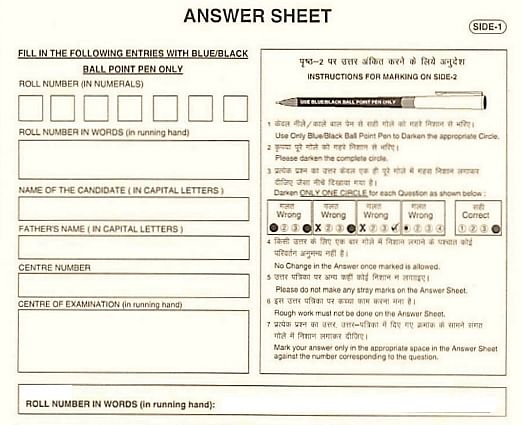
Side-2 This side of the answer sheet contains the following columns which are to be filled by the candidate without any errors.
| No | Field |
| 1 | Roll Number |
| 2 | Centre Number |
| 3 | Test Booklet Number |
| 4 | Test Booklet Code |
| 5 | Question 001 to 180 |
NEET Question Paper Pattern Analysis (Chapter-Wise and Section-Wise)
This section discusses the NEET exam pattern chapter-wise and section-wise. The aspirants planning to appear for the exam in the academic year 2025 must study the NEET question paper pattern from the previous years to understand and estimate the NEET 2025 exam pattern.
The candidates must observe the NEET exam pattern and pay attention to each section's number of questions and each chapter. The candidates should also check the total number of marks/weightage for each section and chapter.
The information below shall help all the aspirants analyze how much time and effort they must devote to each section and each chapter and develop their preparation strategy.
NEET 2024 Physics Question Paper Analysis
Section-wise analysis of NEET exam pattern of 2024 for the Physics paper is discussed below:
| Question Difficulty | Mechanics | Electricity |
Modern
Physics
|
Magnetism | Heat & Thermodynamics | Optics | Waves |
| Easy | 10 | 3 | 6 | 2 | 3 | 1 | 0 |
| Medium | 1 | 6 | 1 | 4 | 2 | 2 | 0 |
| Difficult | 1 | 0 | 1 | 0 | 0 | 1 | 1 |
| Total Number of Questions | 12 | 9 | 8 | 6 | 5 | 4 | 1 |
NEET 2024 Chemistry Question Paper Analysis
Section-wise NEET exam pattern analysis for the Chemistry question paper set for NEET 2024 is tabulated below:
| Question Difficulty |
Inorganic
Chemistry
|
Organic
Chemistry
|
Physical
Chemistry
|
Physical
Chemistry
|
Inorganic
Chemistry
|
Organic
Chemistry
|
| XI | XII | XII | XI | XII | XI | |
| Easy | 3 | 3 | 3 | 1 | 2 | 2 |
| Medium | 4 | 5 | 5 | 3 | 3 | 2 |
| Difficult | 3 | 1 | 1 | 3 | 1 | 0 |
| Total Number of Questions | 10 | 9 | 9 | 7 | 6 | 4 |
NEET 2024 Exam Pattern Analysis for Botany
Section-wise NEET exam pattern analysis for the 2024 Botany question paper is tabulated below for the reference. The table contains data on the number of questions asked from each topic in the 2024 NEET Botany question paper, and the number of marks each topic carried.
| Question Difficulty |
Plant
Physiology
|
|
|
Cell & Cell
Cycle
|
Diversity of
Life
|
Structural
Organization of
Plants
|
Reproduction &
Sexual
Reproduction
|
| XI | XII | XII | XI | XI | XI | XII | |
| Easy | 3 | 2 | 2 | 1 | 1 | 3 | 1 |
| Medium | 2 | 2 | 1 | 1 | 3 | 0 | 1 |
| Difficult | 4 | 3 | 4 | 4 | 1 | 2 | 0 |
| Total Number of Questions | 9 | 7 | 7 | 6 | 5 | 5 | 2 |
NEET 2024 Zoology Question Paper Analysis
Section-wise NEET exam pattern analysis for the Zoology question paper set for NEET 2024 is tabulated below:
| Question Difficulty |
Human
Physiology
|
Animal
Husbandry &
Biotechnology
|
|
Animal
Kingdom
|
Evolution:
Theories &
Evidence
|
Human
Health &
Disease
|
Human
Reproduction &
Reproductive
Health
|
Structural
Organization
in Animals
|
| XI | XII | XI | XI | XII | XII | XII | XI | |
| Easy | 1 | 3 | 3 | 2 | 3 | 0 | 0 | 1 |
| Medium | 7 | 4 | 2 | 2 | 0 | 3 | 2 | 0 |
| Difficult | 4 | 3 | 1 | 1 | 1 | 1 | 2 | 1 |
| Total Number of Questions | 12 | 10 | 6 | 5 | 4 | 4 | 4 | 2 |
NEET Category-Wise Qualifying Marks
The qualifying marks are different for all the categories. The category-wise qualifying marks for the NEET exam are as follows:
| Category | Percentage |
| General Category | 50% |
| Reserved Category (OBC, SC & ST) | 40% |
| General Category - PH | 45% |
| Reserved Category - PH | 40% |
Important Topics from NEET Syllabus 2025
NEET is an extremely difficult exam to crack and requires months of preparation. The Under Graduate Medical Education Board, an autonomous agency under the National Medical Commission, has finalised the NEET (UG)-2025 syllabus, which has been sent to all stakeholders, particularly ambitious applicants.
All the important topics from NEET Syllabus 2025 are discussed below for reference.
NEET Syllabus 2025 for Physics
The important topics from Physics, which are given the highest weightage in the NEET exam are given below for reference:
- Physics and Measurement
- Kinematics
- Laws of Motion
- Work
- Energy and Power
- Rotational Motion
- Gravitation
- Properties of Solids and Liquids
- Thermodynamics
- Kinetic Theory of Gases
- Oscillations and Waves
- Electrostatics
- Current Electricity
- Magnetic Effects of Current and Magnetism
- Electromagnetic Induction
- Alternating Currents
- Electromagnetic Waves
- Optics
- Dual Nature of Matter and Radiation
- Atoms and Nuclei
- Electronic Devices
- Experimental Skills
NEET Syllabus 2025 for Chemistry
The important topics from the Chemistry section of the NEET 2025 exam are listed below. The candidates are advised to focus on these topics the most while studying for the upcoming NEET exam:
- Some basic concepts in Chemistry
- Atomic Structure
- Chemical Bonding and Molecular Structure
- Chemical Thermodynamics
- Solutions
- Equilibrium
- Redox Reactions and Electrochemistry
- Chemical Kinetics.
- Classification of Elements and Periodicity in Properties
- p- Block Elements, d- and f- Block Elements
- Co-Ordination Compounds
- Hydrocarbons
- Organic Compounds Containing Halogens
- Organic Compounds Containing Oxygen
- Organic Compounds Containing Nitrogen
- Biomolecules
- Principles Related to Practical Chemistry.
NEET Syllabus 2025 for Biology
The important topics from the Biology section of the NEET 2025 exam are listed below:
- Diversity in the Living World
- Structural Organisation in Animals and Plants
- Cell Structure and Function
- Plant Physiology
- Human Physiology
- Reproduction
- Genetics and Evolution
- Biology and Human Welfare
- Biotechnology and its Application
- Ecology and Environment.
Also Check: How to Improve Speed and Accuracy in NEET 2025
FAQs on NEET Exam Pattern
Q: What are the salient features of the NEET exam pattern 2025?
As per the NEET exam pattern 2025, there are 180 multiple-choice questions in the new NEET test format. According to the NEET's system for allocating marks, each question was worth 4 points. In addition, as per the NEET pattern, each incorrect response resulted in a loss of 1 mark, and the total points given were 720.
Q: What is the official NEET marking scheme for 2025?
Students received +4 points for each correct response and -1 points for each incorrect response under the NEET marking scheme for 2025. In accordance with the NEET pattern, students will be provided 180 minutes or 3 Hours to complete the paper.
Q: As per NEET exam pattern 2025, what type of questions will be asked in the paper?
As per the NEET question pattern, only MCQ-style questions were included in the NEET exam. In addition, the NEET question pattern will not have any descriptive-type questions.
Q: Can a candidate opt for Bengali medium if I appear for the exam in Delhi as per the NEET pattern 2025?
No, as per the NEET pattern 2025, the regulations and regional constraints on exam locations state that the student can only take the test in the state where they had chosen a particular regional language.
Q: Is there negative marking in NEET exam?
Yes, there is a provision for NEET negative marking in the test. As per the negative marking in NEET, candidates will be penalized with 1 point for every wrong attempt.
Q: What are the changes introduced in NEET Exam Pattern?
The NEET 2024 test duration will be 180 minutes (3 hours). There were 180 questions in all, and the each subject will have 45 questions each and the scoring system for the NEET had not changed.
Q: Will NEET 2025 have descriptive questions?
Only objective-style questions were asked in the exam (MCQs).
Q: I marked two answers for a question. One of the answers is correct. Will I get full marks for this question?
No, there was no such option for choosing multiple answers.
Q: Is it necessary to pass in individual sections of NEET 2025?
It was not required to pass in every subject to qualify for NEET. Your final grade was the only thing that counted. Therefore, it did not matter from whatever topic you received the marks; your position was only determined by your exam's overall score.
Q: How many questions in NEET need to be answered within the time frame?
Total questions in NEET exam is 180, which a candidate needs to answer in 180 minutes. As per the NEET paper pattern 2025, each section will have 45 questions.

